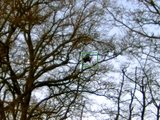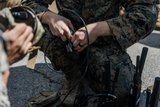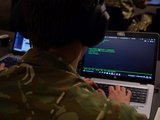Harris announces USSOCOM Falcon III radio orders
US Special Operations Command (USSOCOM) has ordered additional Falcon III manpack and handheld tactical radios from Harris Corporation for the expanded deployment of a SOCOM-accredited wideband tactical communications network. The $18 million orders were announced on 20 January.
The orders call for Harris to supply its Falcon III AN/PRC-117G and AN/PRC-152A radios, which support advanced wideband data networking, and provide users with interoperability through legacy narrowband waveforms.
The SOCOM wideband tactical communications network enables operators to send and receive tactical voice, video and data, resulting in enhanced situational awareness and intelligence, surveillance and reconnaissance (ISR).
George Helm, president, Department of Defense business unit, Harris RF Communications, said: ‘Harris Falcon III wideband radio systems are delivering the tactical Internet to the battlefield. This new network is opening up a world of new combat applications, such as collaborative chat, biometric enrolments, video conferencing and video ISR. These are next-generation capabilities, delivered today, using a proven commercial business model that thrives on competition and innovation.’
The radios offer NSA Type-1 certified High Assurance Internet Protocol Equipment encryption, the highest level of information assurance available to tactical units.
More from Digital Battlespace
-
![Chess Dynamics successfully demonstrates Vision4ce AI-driven tracker]()
Chess Dynamics successfully demonstrates Vision4ce AI-driven tracker
The Vision4ce Deep Embedded Feature Tracking (DEFT) technology software is designed to process video and images by blending traditional computer vision with artificial intelligence (AI) algorithms to present actionable information from complex environments.
-
![Wave Relay devices cleared for security use on commercial systems in industry trend]()
Wave Relay devices cleared for security use on commercial systems in industry trend
Persistent Systems has been cleared by National Security Agency (NSA) to transmit sensitive data on commercial networks. The devices are added to the NSA’s Commercial Solutions for Classified (CSfC) component list which also includes other companies’ products providing the same security.
-
![UK teases cyber spending boost in Strategic Defence Review ahead of “imminent” release]()
UK teases cyber spending boost in Strategic Defence Review ahead of “imminent” release
The release of the UK’s Strategic Defence Review (SDR) has been long promised as mid-year. It is possible it could be as early as 2 June although the UK Ministry of Defence (MoD) continues to play its cards close to its chest.
-
![Intelsat emphasises SATCOM resilience for SOF in contested domains (video)]()
Intelsat emphasises SATCOM resilience for SOF in contested domains (video)
Intelsat outlines how its multi-orbit SATCOM architecture is enhancing connectivity and resilience for special operations forces operating in degraded and contested environments.
-
![US Space Force’s next-generation missile warning system moves forward with $500 million in new contracts]()
US Space Force’s next-generation missile warning system moves forward with $500 million in new contracts
Next-Generation Overhead Persistent Infrared (Next-Gen OPIR) satellites are intended to provide early warning of missile launches from any location worldwide and new ground stations will result in expanded coverage of critical missile warning.






















